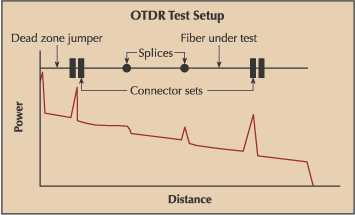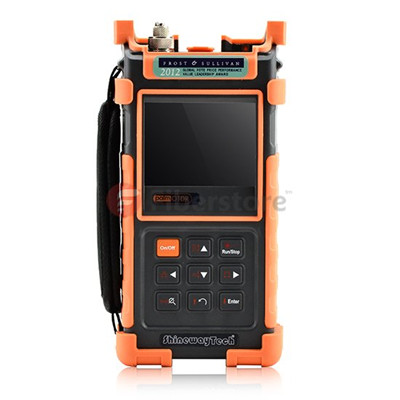Learning how to operate an OTDR properly is a very important skill for technicians in companies management and maintenance of fiber optic networks. The following passage contains clearer descriptions of OTDR to aid the users in understanding the basic principles of OTDR testing.
Introduction of OTDR
An optical time-domain reflectometer (OTDR) is an optoelectronic instrument used to characterize an optical fiber. It functions by launching pulses of light into the optical fiber and measuring the intensity of reflections created by the faults, splices, and bends. And it can also identify the exact location of the fault by measuring the round trip time from the launch to the detection of the reflected returning pulse. By analyzing the OTDR trace, we can get a full report of losses as well as reflective events (connectors and mechanical splices) tied to the distance or the geographical information of an optical fiber link. And the basic function of OTDR is to verify splice loss, measure length and find faults. As a good helper to test fiber optic cables, OTDR is widely used in many cable network testing nowadays.
The Operation of OTDR System
OTDR uses the effects of Rayleigh scattering and Frenel reflection to measure the characteristics of an optical fiber. An OTDR uses a light backscattering technique to analyze fibers. In essence, by sending a pulse of light into the fiber and measuring the travel time (“time domain”) and strength of its reflections (“reflectometer”) from point inside the fiber, it produces a characteristic trace, or profile, of the length vs. returned signal level on a display screen.

Then the trace will be analyzed on the spot, point out immediately for documentation of the system, or saved for later analysis. OTDR provides for automatic analysis of the raw trace data, thereby eliminating the need for extensive operator training.
Advantages of OTDR
People choose OTDR for its accuracy, measurement range and the ability to measure closely spaced events.
- Accuracy
A figure of merit for the OTDR for a detector is accuracy. It means the correctness of the measurement, that is the difference between the measured value and the true value of the event being measured.
- Measurement Range
Defined as the maximum attenuation that can be placed between the instrument and the event being measured, for which the instrument will still be able to measure the event within acceptable accuracy limits.
- Instrument Resolution
Instrument resolution refers to a measure of how close two events can be spaced and still be recognized as two separate events. We all knew that the shorter the pulse duration and the shorter the data sampling interval, the better the instrument resolution, but the shorter the measurement range. In order to solve this situation, some OTDR manufacturers use a “masking” procedure to improve resolution.
Although operating a OTDR is not especially difficult, but it requires familiarity with the model you are using. OTDRs are available with a variety of fiber types and wavelength, including single mode fiber, multimode fiber, 1310nm, 1550nm, 1625nm, etc. Here comes a good news—you can find all the above products at www.fs.com. We also supply OTDRs of famous brand, such as JDSU MTS series, EXFO FTB series, YOKOGAWA AQ series with competitive price and high quality.





